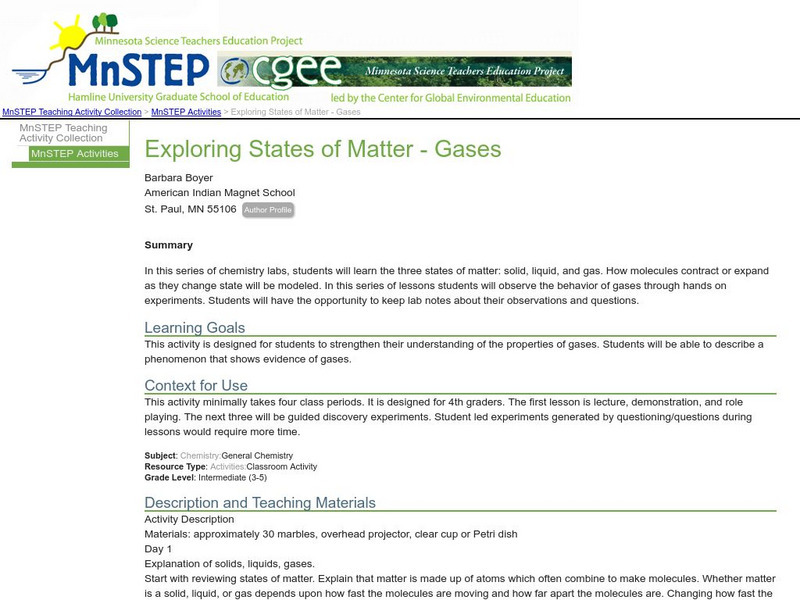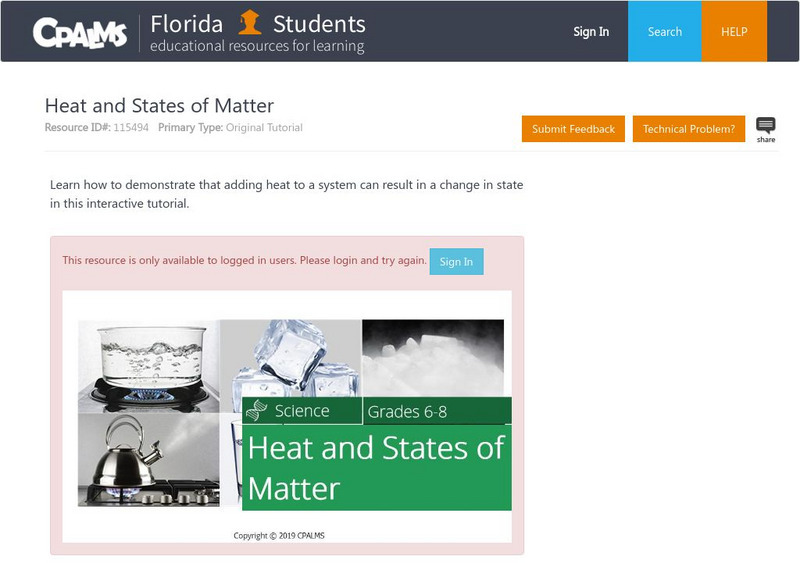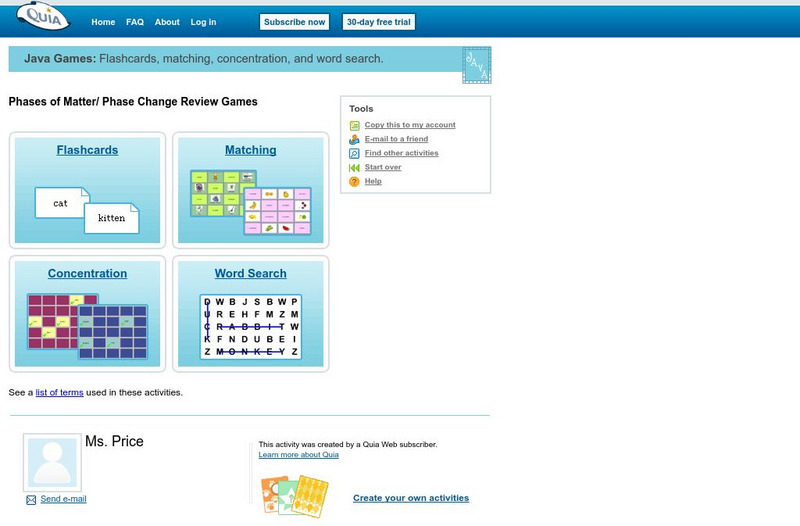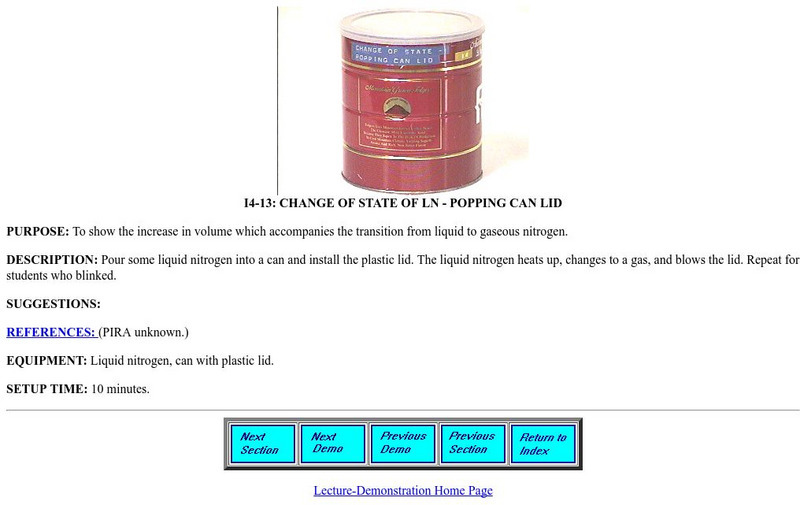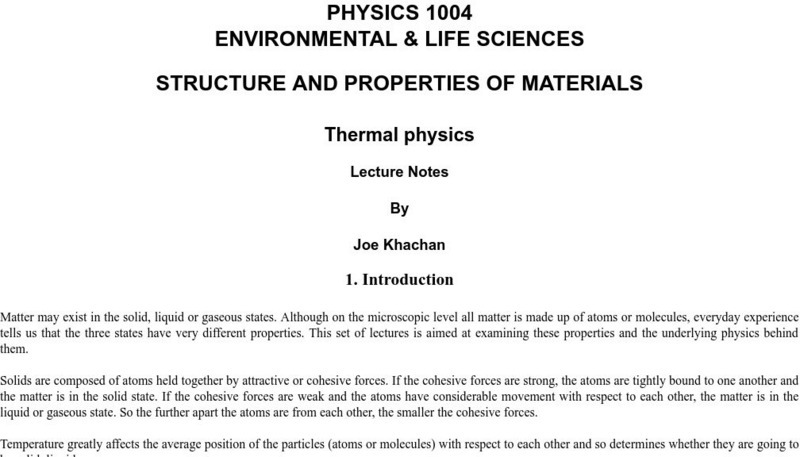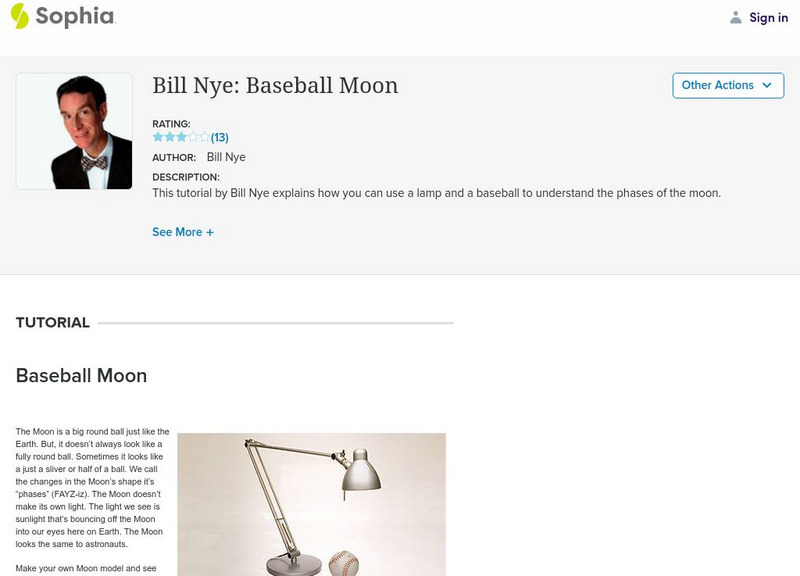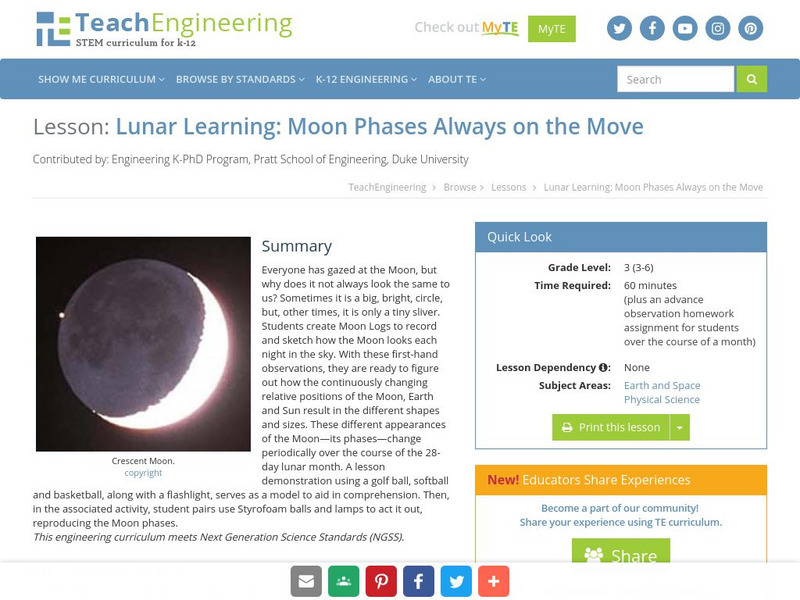Purple Math
Purplemath: Graphing Trigonometric Functions
This resource explains how to relate constants in trigonometric function to amplitudes, vertical shifts, periods, and horizontal or phase shifts with the help of many solved examples for various trigonometric functions.
Science Education Resource Center at Carleton College
Serc: Exploring States of Matter Gases
In this series of chemistry labs, students learn about the three states of matter by observing how molecules contract or expand as they change state.
CPALMS
Florida State University Cpalms: Florida Students: Heat and States of Matter
Learn how states of matter can change as heat is added to a system.
Other
Birthday Moons: It's Just a Phase You're Going Through
Ever notice that the moon appears to change shape? Does this occur randomly or is there a pattern? Discover the answer by taking a virtual trip to the moon for your birthday.
Chem4kids
Chem4 Kids: Changing States of Matter
Find out how matter can change from one state to another.
Quia
Quia: Phases of Matter
Four activities for reviewing vocabulary and definitions related to changes in states of matter.
University of Maryland
U. Of Maryland: Change of State of Liquid Nitrogen
A page from the University of Maryland Physics Lecture Demonstration Facility. Provides directions for a teacher demonstration of the vaporization of liquid nitrogen. Shows apparatus and set-up; provides suggestions. Easily adaptable as...
University of Colorado
University of Colorado: Ph Et Interactive Simulations: States of Matter
Watch different types of molecules form a solid, liquid, or gas. Add or remove heat and watch the phase change. Change the temperature or volume of a container and see a pressure-temperature diagram respond in real time. Relate the...
University of Sydney (Australia)
University of Sydney: Structure and Properties of Materials/thermal Physics
An exhaustive set of "lecture notes" on various topics in thermal physics (including thermal expansion). Explanations are well done and more interesting than most. Includes both a mathematical and conceptual treatment of topics. Humor,...
University Corporation for Atmospheric Research
Ucar: Just a Phase: Water as a Solid, Liquid, and Gas
This site helps students construct a model of the arrangement of water molecules when present as solid, liquid or gas. Includes background information, lesson plans, links to standards and assessment ideas.
CK-12 Foundation
Ck 12: Physics: Thermal Properties Study Guide
A study guide for concepts related to thermal energy.
Bill Nye
Bill Nye: Baseball Moon
Try this at-home science experiment to make your own Moon model and see how the Moon's phases change.
Sophia Learning
Sophia: Bill Nye: Baseball Moon
Bill Nye explains the phases of the moon with an experiment using a baseball, a lamp on a table, a dark room, and a stool or chair that swivels. As the person moves around, the changes in reflected light show the phases of the moon. The...
TeachEngineering
Teach Engineering: Lunar Learning
Why does the Moon not always look the same to us? Sometimes it is a big, bright, circle, but, other times, it is only a tiny sliver, if we can see it at all. The different shapes and sizes of the slivers of the Moon are referred to as...
Science Buddies
Science Buddies: What's the Point of Boiling?
You know that water can exist in three separate phases: solid (ice), liquid (water), and vapor (steam). To change from one phase to another, you simply add (or remove) heat. When water boils, what happens to molecules (for example sugar...
TeachEngineering
Teach Engineering: How Cold Can You Go?
Students explore materials engineering by modifying the material properties of water. Specifically, they use salt to lower the freezing point of water and test it by making ice cream. Using either a simple thermometer or a mechatronic...
Utah State Office of Education
Utah Science: What's Up There Anyway?
Far out there we observe the moon, its phases, and its constant changing position as we sit on a swing in the backyard. Investigate the science behind the moon through the activities provided.
Library of Congress
Loc: See, Hear, and Sing Animation
The Library of Congress takes a look at the wacky world of cartoons, beginning with George Melies, who demonstrated that objects could be animated in film with a series of drawings, each drawn with slight changes.
Curated OER
Cornell University: The Phases of the Moon
This site from Cornell University provides great information on the different phases of the moon. As the Moon moves in its orbit around the Sun, our view of the side illuminated by the Sun changes. Furthermore, the rising and setting...
Scientific American
Scientific American: What Is an Exothermic Reaction
Scientific American magazine, in the person of Dr. Gerald R. Van Hecke, gives a wonderfully complete answer to this question. Complete with very many hot words for additional background. And a wonderful NASA launch photo.
Science Buddies
Science Buddies: Project Ideas: Explore the Chemistry Within Hand Warmers
Determine how the starting temperature affects crystal growth and heat generation of a hand warmer in this chemistry science fair project. The Science Buddies project ideas are set up consistently beginning with an abstract, objective,...
TeachEngineering
Teach Engineering: All Fat Is Not Created Equally!
Students learn that fats found in the foods we eat are not all the same; they discover that physical properties of materials are related to their chemical structures. Provided with several samples of commonly used fats with different...
TeachEngineering
Teach Engineering: Insulation Materials Investigation
Students test the insulation properties of different materials by timing how long it takes ice cubes to melt in the presence of various insulating materials. Students learn about the role that thermal insulation materials can play in...
Other popular searches
- Phase Changes of Matter
- Phase Changes in Matter
- Phase Changes in Water
- Chemistry Phase Changes
- Phase Changes of Water
- Water Phase Changes
- Phase Changes Matter
- Lessons on Phase Changes
- Identify Phase Changes



